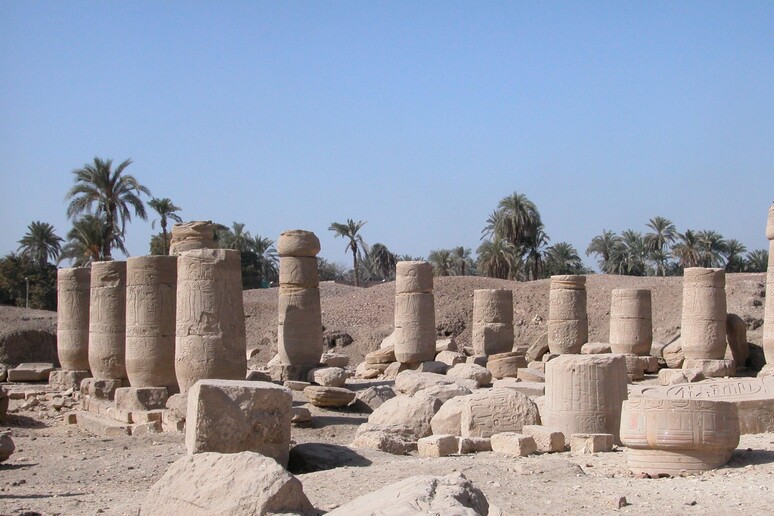The Italian papyrologist and
archaeologist Rosario Pintaudi is the undisputed guardian of the
remains of Antinopolis, an Egyptian city founded by Emperor
Hadrian in memory of his deified young lover Antinous.
The discovery of the remains of the city brought to light
apotropaic foundation rites, papyruses with imaginary animals,
vestiges of a conquering Islam, and Coptic mummies covered in
gold.
Pintaudi, born in the Messina province but Florentine by
adoption, is the doyen of Italian archaeological missions in
Egypt and is working at the excavations of the ancient Antinoe
(Antinopolis), founded by Emperor Hadrian in the second century
AD to commemorate his favorite young male lover and to create a
regional capital in the heart of Egypt.
The city lay on the eastern bank of the Nile, about 40
kilometers south of Minya and about four and a half hours by car
south of Cairo, not far from the place where - according to
legend - the boy drowned towards the end of October 130 AD.
The importance of the site, which has been worked on since
1935 by the archaeological mission of the Istituto Papirologico
"G. Vitelli" of the University of Florence, is mainly due to the
Coptic Christian period - of which little is known and a phase
in Egyptian history between Pharaonic memories and Muslim
civilization, the archeological told ANSA.
In the monumental Coptic necropolis, reserved for the
wealthiest, it can be seen that the city used materials that had
previously been used, Pintaudi notes, such as capitals that date
back to the period of Emperor Hadrian as well as "talatat",
"stones of a particular size" that recall the Akhenaten epoch
and this the 2nd millennium BC.
On one capital there were Christian symbols, a cross painted
red and highlighted by a circle, and the crisma (a symbol of the
sealing of Christianity created in baptism): signs that were not
visible from the outside but which "served for the
'purification' of the pagan architectonic element that was
reused" to prevent "demons and pagan divinities from entering
the church, pushed back thanks to the cross", the scholar said.
For the first time, the mission led by Pintaudi and in which
scholars from several other countries as well as the University
of Rome take part in have reinstalled in Antinopolis, putting it
in its original place - the monumental eastern gate to the city
- an enormous granite column weighing 37 tons and 12 meters
high, using modern means with a dangerous but economical
technique of pulleys and winches similar to those used in
antiquity.
Thousands of Greek and Coptic (a language transliterating the
Egyptian language into Greek characters) papyri were found in
the excavations, including one portraying an emperor and his
bride, or at least a female figure with her chest exposed "on a
cart pulled by imaginary animals", Pintaudi said.
The former professor of Papyrology at the University of
Messina noted that there was also a fragment of Homer's Odyssey
in Greek, illustrated by Diletta Minutoli, one of his students
who has been sharing the direction of the excavation for years.
The site offers in the room of the Christian sanctuary also a
poly-chromatic painting on plaster with a battle scene,
including knights, archers, and shields that "incarnate the
translation between the two worlds": on one side the Byzantine
Empire that is losing Egypt and on the other Islam in its
arrival.
It is probably a scene from the last Christian imperial
period of Egypt, the archaeologist said, noting that for Copts,
Antinoe is the city of martyrs, the first large Christian center
of Egypt that fell into Arab hands.
These finds had been described years ago in a documentary by
the French-German television channel "Artè" on "the mystery of
the Coptic mummies of Antinoe" found by the French archaeologist
Albert Gayet between the end of the 19th century and the
beginning of the 20th.
The finds were neglected for decades in the store rooms of
the Louvre, from which they emerged in a very good state of
conservation.
The documentary underscored that this fact in showing the
mummified faces with gold flakes, some of which "had luxurious
clothes covered in gold leaves".
The aerial photo is by Marcello Spanu, who teaches ancient
topography at the University of Roma Tre.
ALL RIGHTS RESERVED © Copyright ANSA











